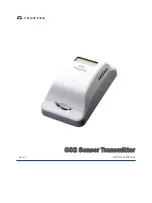
Step 1:
Step 2:
With negative ground system, connect the red wire (one with in-line fuse
holder) to either the (a) fuse block, (b) cigarette lighter, or (
directly to
the positive post on the battery . Usually, the fuse block is the most conv-
enient connecting point. It is also possible to connect to the Accessory
terminal on the fuse block or ignition switch, so that your CB unit automa-
tically goes off, preventing accidental battery drainage. Then tightly
connect the black wire directly to the vehicle s metal frame.
With positive ground system, reverse the wires, connecting the red/ fuseh-
older wire to the frame, the black wire to your DC power source. A light or
meter can be a good aid in locating a suitable power source and
ground.
In either case, a good, direct metal-to-metal ground is essential for optim-
um performance.
Connect your antenna system to the antenna connector, If you are using an
external speaker or a PA speaker, connect it to the appropriate jack one
unit rear panel.
Roof mount - The antenna mounted on roof represents a transmission/reception
range closest o ideal.
Front cowl mount - The radiation pattern is slightly greater in the direction of the
rear bumper opposite the side on which the antenna is mounted. Provides case in
antenna mounting.
Rear deck mount - The radiation pattern is strongest in the direction of the front
bumper opposite the side on which the antenna is mounted.
CB Antennas
Note: The licence requires that equipment which have provision for the connection
of an external antenna shall not be connected to other than a single element rod or
wire antenna not exceeding 1.5m in overall length.
For best reception and transmission, your radio should use an antenna especially
designed for a frequency of 27.7 MHz. Antennas are purchased separately and sup-
plied with assembly and installation instructions, mounting hardware, and a coaxial
antenna cable fitted with a fully assembled standard connector (type PL-259) for
quick connection to your transceiver. CB antennas are available in many sizes and
styles. Base loaded quarter-wave antennas are most popular because they require
less space than full quarter-wave types and are easily installed.
These antenna types physically shorter but electrically equivalent to full quarte rw-
ave whip antennas. We advise the use of base loaded whips of less than 1.5 meters.
The antenna s mounted location on the vehicle affects the operation of the radio.
Transmission and reception characteristics vary for different antenna locations, Thr-
ee of the most popular antenna mountings are shown on next page.
C
8
)
’
’






























